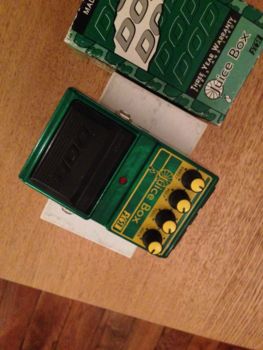
There is an easier (and more reliable) way - use a 4013 for the bistable and a 4066 for the audio routing. The DOD switching section looks interesting, but I'll do a search before. Now I'm curious to see the opposite side: if I want to convert a true bypass to a super silent switching mode. The first purple trace need removing altogether but leave the second purple trace, then a 3pdt switch needs wired in at the jacks to make it true bypass, your example takes the input from after the buffer. To make this true bypass you are correct in removing all the components you have boxed. I like them both, but this one gets far more play time. The Level provides quite a bit of gain as well. Despite the "overdrive" label, it's capable of a nice hard rock distortion when you crank the Drive. I was just playing around with it again tonight, mostly to ensure I didn't break anything when I put it back together.

I don't have any first-hand experience with the FX101, but I own the FX100. When I drew in the diode placement, I forgot to add the resistor. Also, the gyrator formed by Q7, R47, C17, C19, R27 and R32 is not present on the FX101.ĭoes anyone have experience with these actual pedals? I wonder if they sound as good as the reviews suggest?

In the diagram here, R51 looks like this same resistor so I assume it is removed if the diodes are present. Andrewkirsanow wrote:Hi there, I don't want to sound dumb here, but I was looking at the component side photos on another website of the FX100 and the FX101, and where D7 is removed on the FX100 board, there seems to be a resistor in it's place, looks like 1k.


 0 kommentar(er)
0 kommentar(er)
